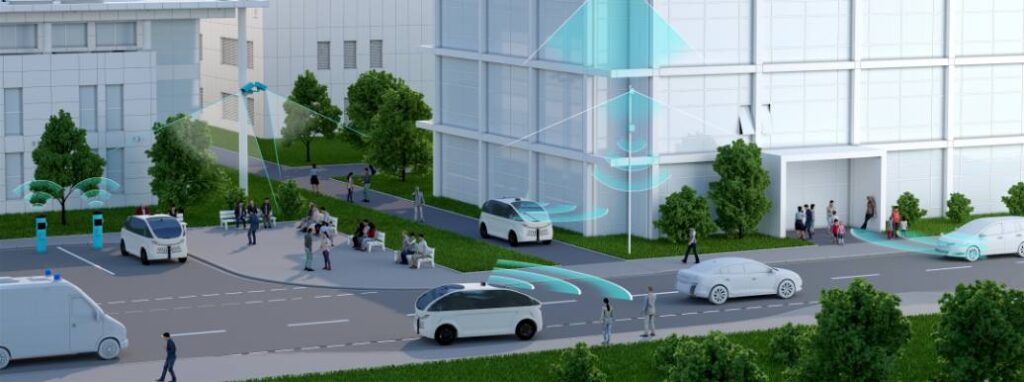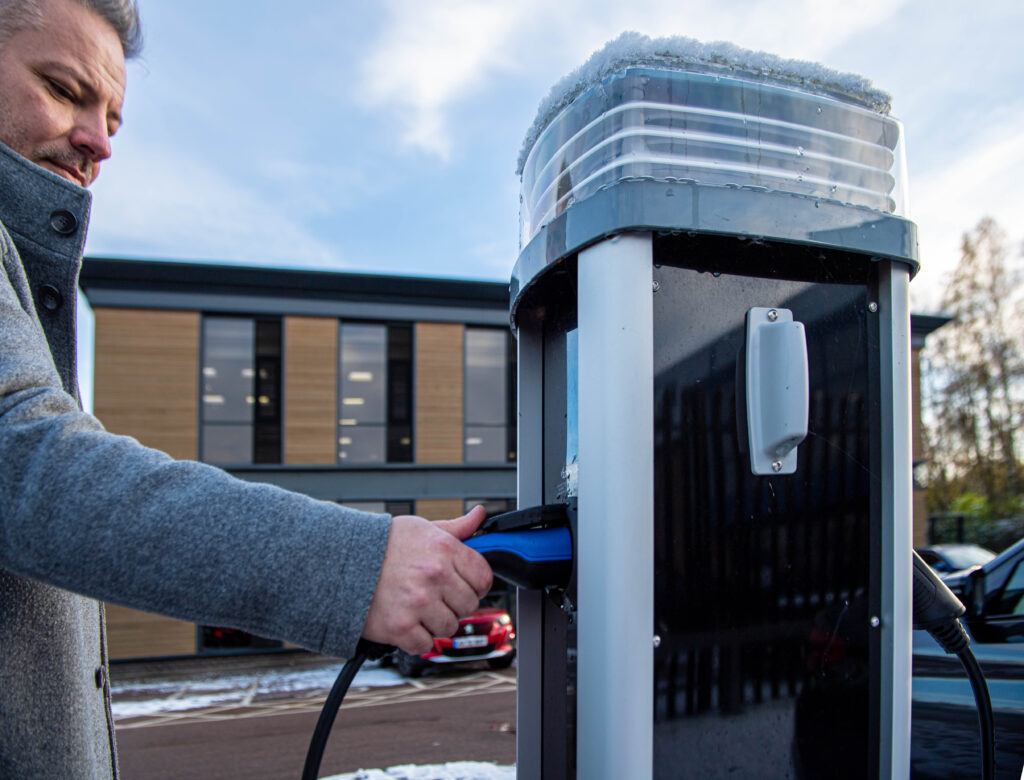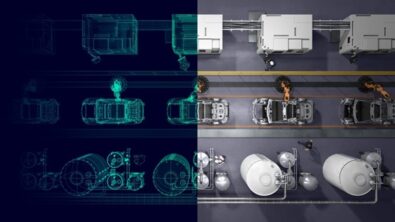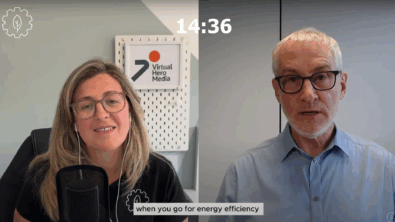Building the future of mobility with the technology of today

Maybe we’re not going to get the flying cars we were promised in movies like Back to the Future. That doesn’t mean that the future modes of transportation and the possibilities of mobility won’t be revolutionary and change the way we move or how goods are transported from one destination to another. We might not all have our flying DeLorean, but the private vertical take-off and landing (VTOL) vehicle already exists and there are autonomous vehicles currently shuttling people around on college campuses.
The future of mobility is exciting. With the development and deployment of new technologies, the transportation vehicles and methods of mobility in the future are poised to look different than today. It won’t just impact how you get to the grocery store and back, but how much emissions are exhausted from shipping vessels, how cities operate their infrastructure, the quality of life of individuals and even the jobs we have, many of which don’t even exist yet.

One aspect of the future of mobility is chip-to-city, which is a concept that connects the infrastructure to the vehicles, people and just about everything, from the integrated circuit to the streetlights and cars. To get there involves a collection of technology from the comprehensive digital twin to artificial intelligence and smart design.
This will lead to transportation means that can reduce traffic congestion and accidents while also increasing the sustainability of a metropolitan city.
We are well on our way and, with the most advanced technological tools of today, innovators and visionaries are creating the future of mobility.
To get there will mean focusing on two concepts: electrification and autonomous capabilities.
What is electric mobility?
In general terms, electric mobility means the development of electric power drive trains. Its purpose is to shift vehicle design away from the use of fossil fuels and carbon gas emissions.
Electric mobility is crucial for many reasons as a future alternative, but from a sustainability standpoint the transportation sector is one of the largest contributors of greenhouse gas emissions worldwide. This isn’t just driving cars through the city but also shipping, aircraft, trains, heavy machinery and much more.
— According to a recent EPA report, 29 percent of greenhouse gas emissions in the United States comes from the transportation sector —
The challenges faced by manufacturers creating electric vehicles stem from battery creation, which includes how power grids will provide the energy that these vehicles run on. The better technology can improve battery performance, the more efficient it can draw power from the grid and therefore continuously reduce overall energy needs and carbon gas emissions.
Accomplishing electric vehicle and electric vehicle technologies requires developing and deploying a suite of technologies that maximize the efficiency of batteries and power generation, which includes how it’s generated, distributed, monitored and managed.
But electric mobility is more than just cars. Along with vehicle electrification there has been an increase in electrification of the airplane. Part of the goal of switching from mechanical to electrical was to achieve more efficiency in powering engines through electric propulsion instead of hydraulic or mechanical power. While large commercial aircraft may not fully adopt electrification for years, smaller companies like Bye Aerospace are designing all-electric two and four-seat aircraft. Electric VTOL air taxis are another advancement causing excitement in the aerospace industry because of their ability to fly above the gridlock in a city.
Some of the biggest shifts in electrical aircraft that are powered by batteries especially in air taxis and in delivery drones. Battery solutions allows engineers to create more efficient, quieter and smaller components at scale. No longer do they have to build around where the engine needs to be. This makes these types of drones and air taxis more accommodating to an urban environment.
What does autonomous mean?
Autonomous vehicle technology is being developed at lightning speed. To push a wary public to be more comfortable with adopting autonomous vehicles involves implementation of state-of-the-art systems and slow introduction of new technology. An example is how newer model vehicles are equipped with several Level 2 autonomous capabilities such as adaptive cruise control and hands-on lane centering steering.
Achieving full autonomy will take time. Take the simple act of changing lanes as an example. A fully autonomous vehicle would need to understand where it is on the road, what other lanes it might move into, the locations of other vehicles and their speed, what other obstacles and hazards might be present and more.
To achieve this one maneuver, vehicles will need to receive and process information in real time from the infrastructure, other vehicles and more. Verifying safety takes billions of hours of testing. To achieve this, simulation software and real-time feedback can ensure capabilities in a fraction of the time while continuing to maximize performance.
While full autonomy, when a vehicle can complete travel autonomously in any environmental conditions, may be years away, the continued technological advancement is pushing us closer and more comfortable with autonomous mobility.
The future of mobility: Electrification and autonomous vehicles
As we shift our mindset to mobility, we start focusing on people and how we can extend access through various means of transportation. New technologies will create new opportunities and abilities for people to move.

The term mobility is showing up in the branding and operations of several automotive OEMs as they see this shift as a period of profound transformation. They recognize that it’s not just transportation, but the investment in emerging mobility services and connectivity solutions that will be the future.
As electrification continues to flourish, there will be an even greater need for more electrical engineers who understand how to design and build PC boards, integrated circuits and the software that’s required to make it work together. As we see this shift from mechanical systems and mechanical engineering to more software-driven systems created by electrical, electronics and software engineers who, at the component level, can understand how to design, test, and manufacture batteries and electrical motors.
What tools are available now to the design and engineering teams who strive for a world of greater mobility and chip-to-city infrastructure?
The Siemens Xcelerator portfolio provides simple access to the latest technologies that are easy to integrate, adopt, and build upon your current technological infrastructure.
Companies eager to be a part of the future of mobility will have access to the best-in-class software and services that use the comprehensive digital twin to combine the real and digital world for designing products, processes and performance. With Siemens Xcelerator, engineers can see it, test it and verify it before they build it.
Siemens Xcelerator is an open digital business platform with the ambition to create a powerful ecosystem of partners who can jointly accelerate digital transformation tailored to customers’ specific business goals.
Learn more about Siemens Xcelerator and how you can transform your business into a digital enterprise.
Want to learn more about the future of mobility? Siemens recently partnered with the University of Michigan to create this free online course: People, Technology, and the Future of Mobility

